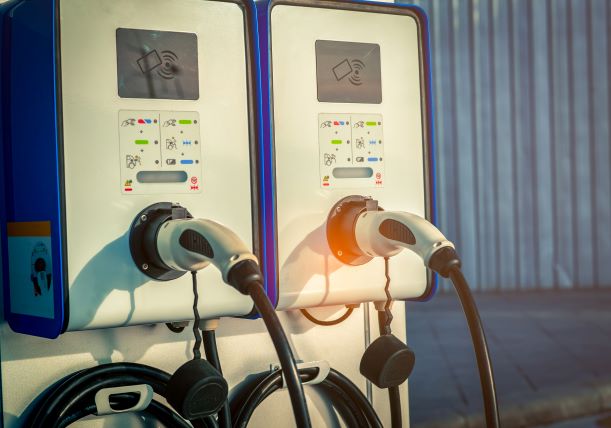Electric vehicles in strata schemes
An article by Peter Fagan, a senior Consultant in our Sydney office.
The evolving market
Beyond the savvy investors now basking in the satisfaction of escalating share prices of the various electric vehicle manufacturers, owners corporations and lot owners now race for space for installation of charging stations throughout New South Wales.
Sales of electric vehicles in Australia tripled in 2021[1] and predictably will only continue in the foreseeable future. The market surge in these vehicles now place demands on owners corporations to modify common property or cede to lot owner requests for charging device installations.
Cheaper running costs, lower carbon emissions, government incentives and most importantly the imminent relaxation of legislative requirements for installations on common property will undoubtedly see these vehicles as more prevalent.
How owners corporations respond to these market forces in terms of management of common property will unfold over the coming years. Several considerations apply – functionality of common property services, costs, methodology of charging device installation, risk and commercial opportunity.
Modification of common property – current position
In the ordinary course, any works on the common property in terms of improvements or additions require a special resolution or common property rights by-law pursuant to s.111 of the Strata Schemes Management Act 2015.
Lot owners wanting to install charging devices on common property should currently present a satisfactory by-law with clauses to include clear installation designs, defined metering provisions (so that neither the owners corporation nor other lot owners are bearing another’s electricity costs), repair and maintenance obligations, insurance requirements and suitable indemnities. A common property rights by-law cannot be unreasonably refused by an Owners Corporation.
A New Dawn – legislative change and guidelines
Thankfully some of the burdens facing owners corporations and lot owners in terms of red tape for obtaining approval for installations is receding. The government is now publishing guidelines to assist in such processes and confirmed that the requirement for a special resolution for such approvals is changing to an ordinary resolution only. The Strata Schemes Management Amendment Sustainability Bill 2020 categorises electric vehicle charging infrastructure as a sustainability infrastructure upgrade akin to minor renovations as described in s.110 of the Strata Schemes Management Act 2015.
Sustainability infrastructure is defined as changes to part of the common property (which includes the installation, removal, modification or replacement of anything on or forming part of that property) for any one or more of the following purposes:
(a) to reduce the consumption of energy or water or to increase the efficiency of its consumption,
(b) to reduce or prevent pollution,
(c) to reduce the amount of waste sent to landfill,
(d) to increase the recovery or recycling of materials,
(e) to reduce greenhouse gas emissions.
Instead of the time delays, costs and voting uncertainties associated with special resolutions, these processes will be less stringent. Strata committees can be expected be able to turn around requests from lot owners as opposed to the general body of an owners corporation.
New law – the requirements, necessary considerations
The requirements under the new laws stipulate that before approving a sustainability infrastructure resolution, the owners corporation must consider the following:
- the cost of the sustainability infrastructure and works including any expected running and maintenance costs,
- who will own, install and maintain the sustainability infrastructure,
- the extent to which the use of the sustainability infrastructure will be available to all or some of the lots in the strata scheme, and
- any matter prescribed by the regulations.
The extent of the owners corporation’s duties derived from the legislative amendments are to demonstrate it has given consideration to the above matters. They are still undeniably vested with latitude as to how it applies the new laws.
One requirement on owners corporations is to assess availability of such infrastructure.
Owners corporations may be disposed to expend on multiple charging devices for use by all lot owners and occupiers. The interplay between accessibility to common property services and control of the common property is a vexed question. Section 136 of the Strata Schemes Management Act 2015 empowers an Owners Corporation to create by-laws to “control” the use of lots and common property. Can hours of use restrictions and fair and equitable metering arrangement be achieved? Who will have access to the charging devises and on what terms?
In a general context, it is unlawful to deny access to common property facilities to all lot owners, save for permissible exclusive use by laws. Assuming an approval is granted to a lot owner to install such devices on the common property an owners corporation should ponder the practicalities as regards use of the charging device. A shortage of charging devices will likely increase the prevalence of apps on the market and lot owners wanting to monetise their devices. The prospect of an influx of invitees traversing the common property is obviously undesirable, but it is ordinarily unlawful for an Owners Corporation to restrain a lot owner bringing an invitee into the strata scheme. Conversely owners corporations are expected to manage common property effectively and some semblance of control as to the use of charging devices on the common property can surely be anticipated.
There are some practical measures owners corporations can employ to effectively manage tension between these competing interests including:
- limited circulation of carpark swipe cards;
- an effective boom gate system;
- consideration of a general prohibition on use of the charging devices by non-residents.
An owners corporation must assess running and maintenance costs. Is an installation within the limits of the existing electrical board’s threshold or is independent electrician verification required? As more approvals to different lot owners’ requests arise, consideration as to the necessity and timing of distribution board upgrade would be appropriate. Who and to what degree those costs should be assumed warrant careful consideration. Generally, consultation with an independent accredited installer is advisable to guide an Owners Corporation through such processes.
Removal on sale?
What follows when a lot owner sells the lot leaving a redundant charging device attached to the common property? Will a successor in title willingly accept responsibility for such devices? The prospect of redundant and potentially decaying fixtures attached to the common property is obviously undesirable, but there is unavoidable practical difficulty in enforcing removal on sale clauses on departing lot owners. Where possible, owners corporations appear better served by striving to bestow such maintenance and repair obligations to successors in title where possible.
To Monetise – Leasing Opportunities
An escalation in expressions of interest to owners corporations to utilise areas of common property is anticipated. Similar to arrangements with telecommunication companies paying to lease or licence common property, the shortage of space for charging devices presents enviable opportunities for owners corporations to monetise parts of the common property.
One consideration is whether a lease or license of a visitor car parking space is legitimate to facilitate such arrangements. An owners corporation would need to consider how such arrangements would accord with the original Council consent pertaining to visitor car parking spaces. Similarly whether any land tax implications arise from any commercial benefit the owners corporation achieves.
Insurance Implications and Hazards
To allow installations of charging devices unavoidably create some acute public liability concerns. Does all the associated cabling pose a safety hazard? This is even more prevalent in basement carparks with the litany of waterproofing defects throughout strata schemes. Beyond the unsavoury prospect of wires and cables running through a strata scheme, most electric vehicles are silent in operation and a potential risk to pedestrians and other drivers. Appropriate use of signage on the common property is advisable.
Concluding Comments
Before sophisticated and silent automobiles begin traversing the carparks and driveways in your strata scheme in masses, evaluation of the following is advised:
- Subject to the existing by-laws, a special resolution is presently required to perform such works on common property, (installing a charging device). The relaxation to ordinary resolution is imminent.
- The capacity of the existing electrical board. Is an upgrade necessary to facilitate installation and cost allocation?
- Ability to prescribe a fair and equitable metering system, hours of use and enforceability procedure.
- Assess visitor car parking spaces or other areas of the common property for utilisation or not.
- Risk of accident or injury and alleviation by appropriate signage.
- Strata sub-committee formation for the apprehended pressure to improve the common property.
- For new developments, arrangements with the developer, a third-party electricity supplier and how those charges are being transmitted.
- Consultation with an accredited and experienced installer.
[1] Statistics from Electric Vehicle Council of Australia




